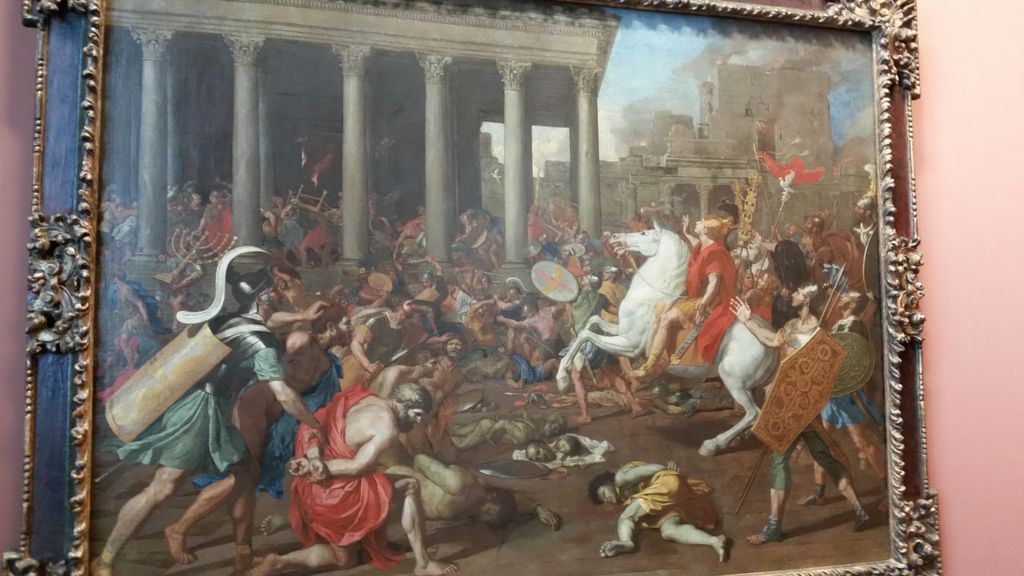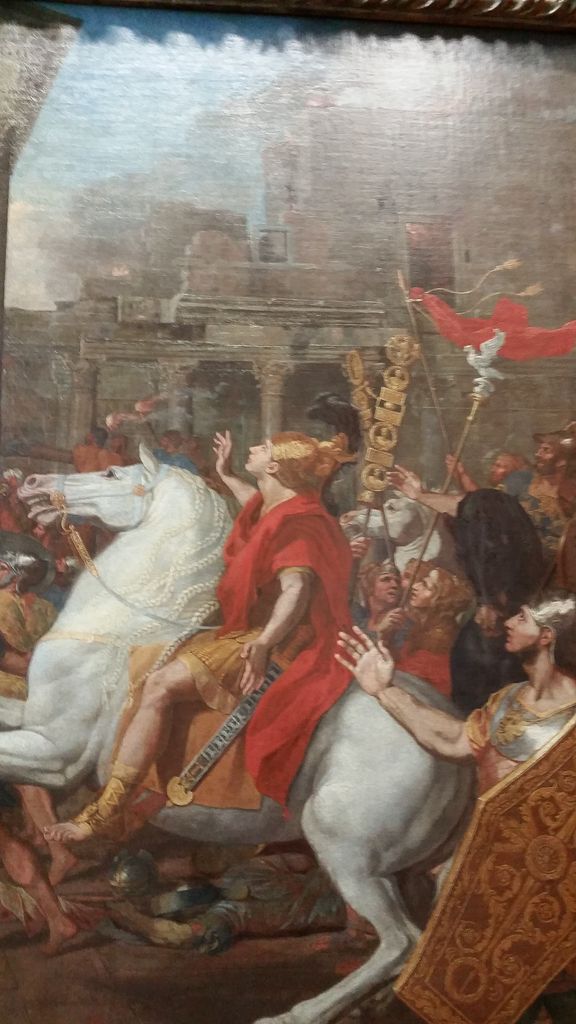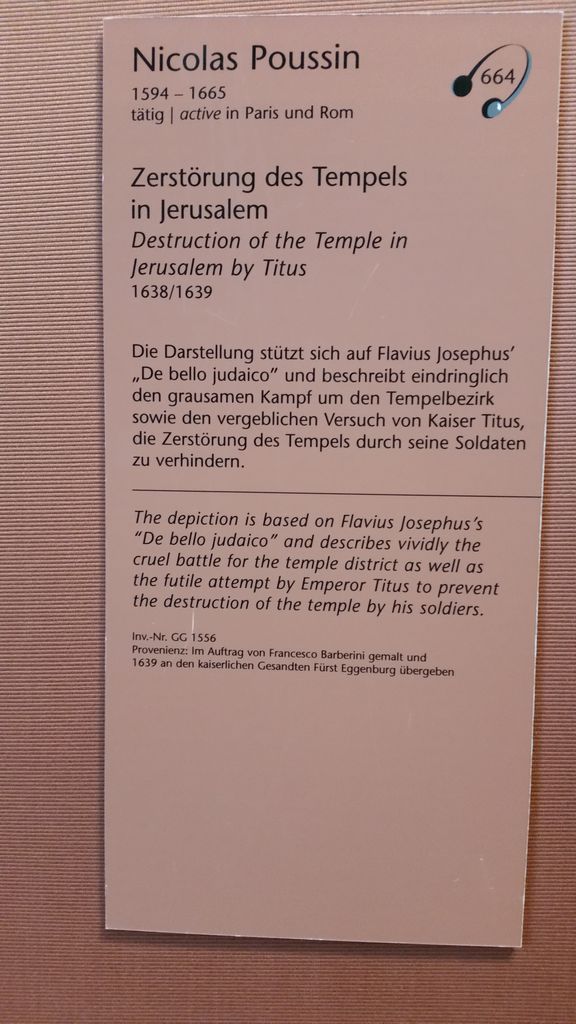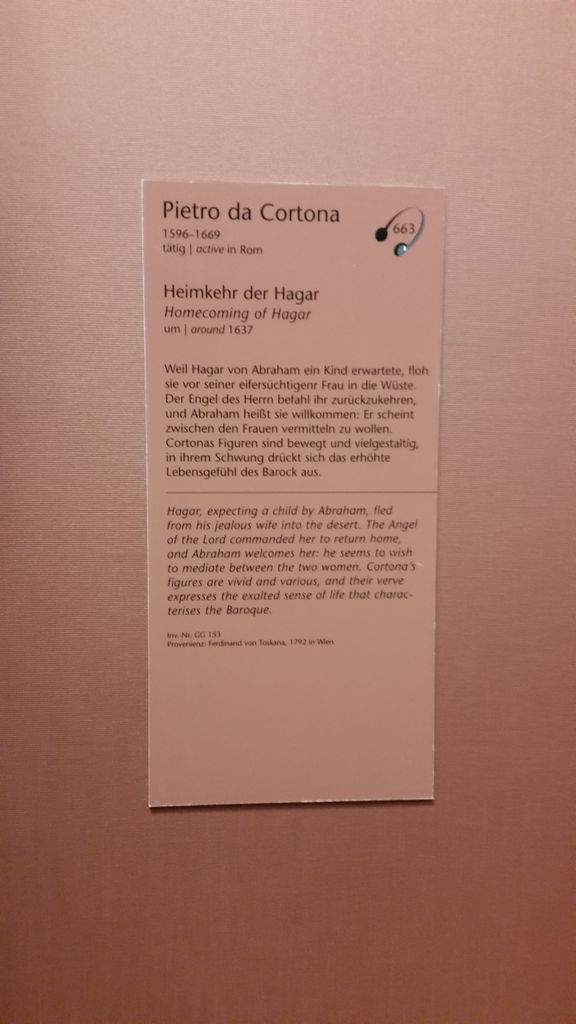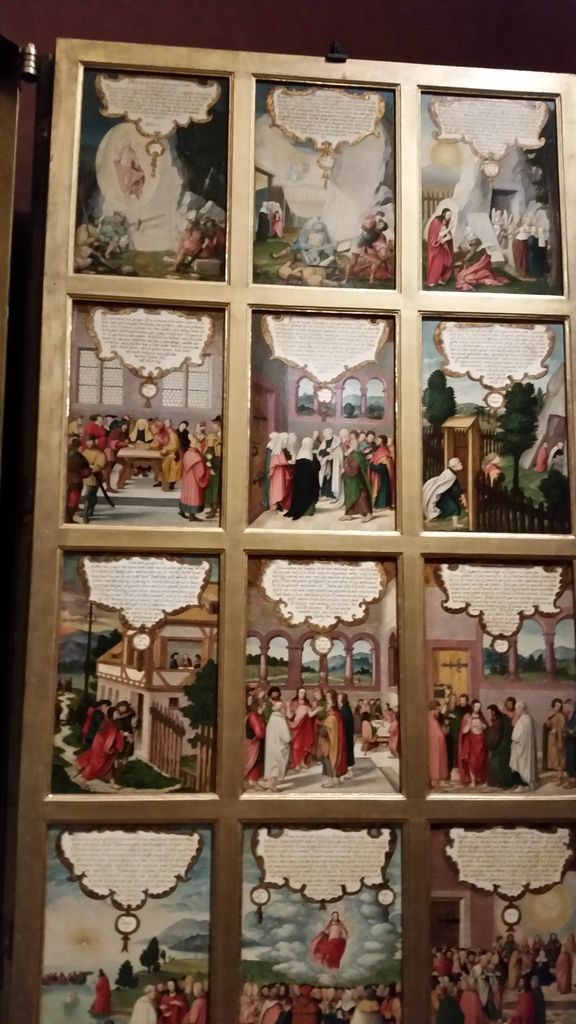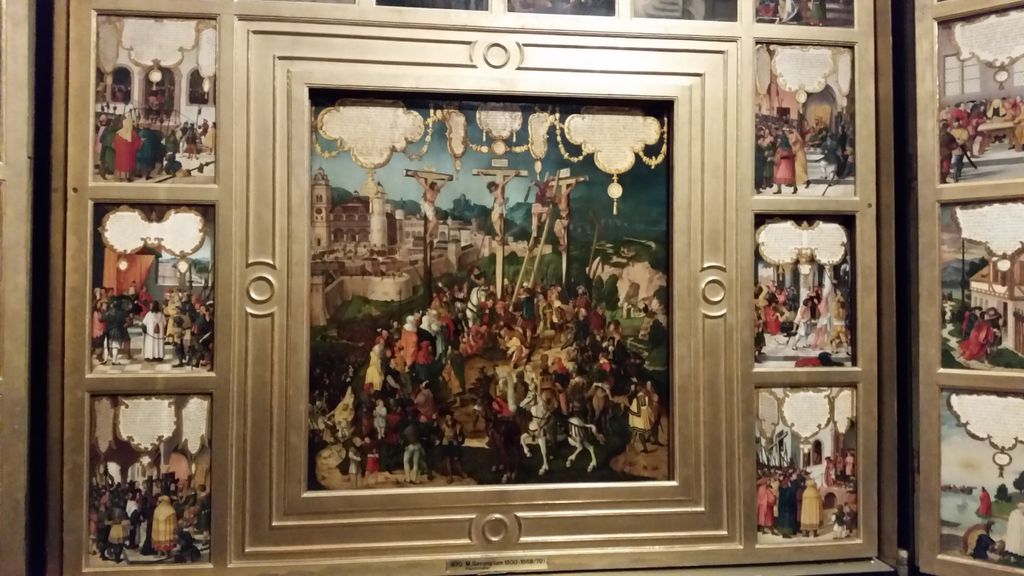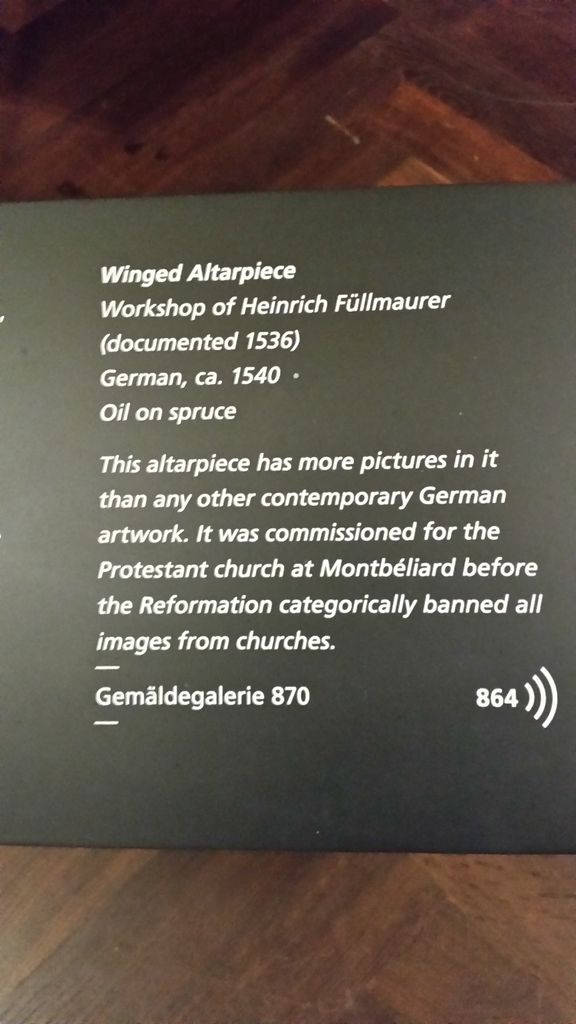There is a lot of interesting things in the Kunsthistorische Museum in Vienna, not least its Christian art collection and substantial Greco-Roman and ANE holdings. This post will deal with the former of these. 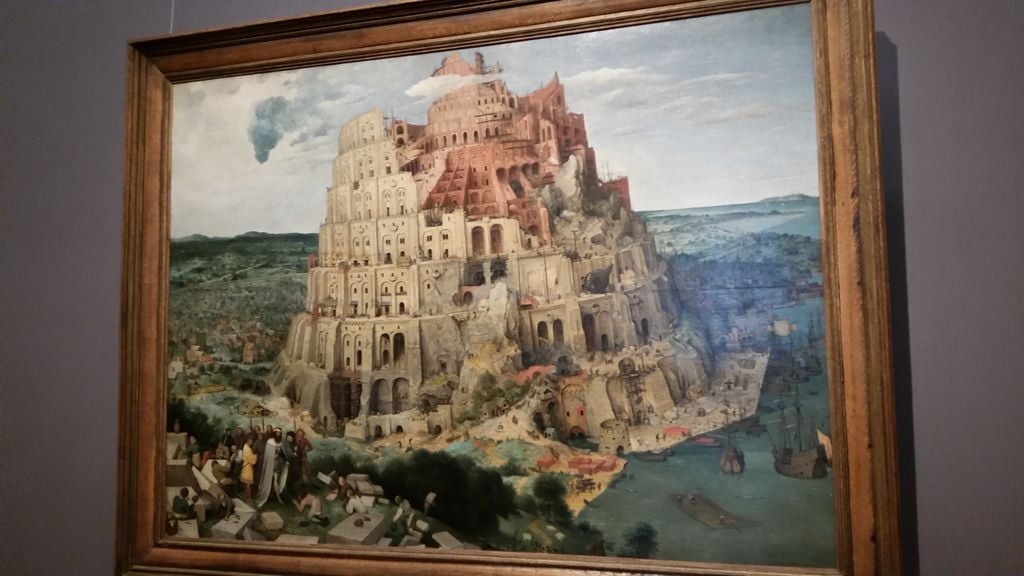
Certainly one of the most famous paintings in the museum of relevance to Biblical studies is the painting by Bruegel of the Tower of Babel. Bruegel had visited Rome in 1552-53 and studied that other major symbol of hubris (from a Christian viewpoint), the Roman colosseum which had been the supposed locale of Christian persecutions (actually did not exist before the time of Titus, when Nero was long gone. Those executions took place at the circus maximus). Bruegl studies the arches and design of the colosseum and you can tell from the painting above it has affected his portrayal of the tower which is more of a citadel than just a tower into the heaven. Clearly Bruegel was fascinated by this Biblical story, as he did no less than three paintings of the tower. Here is another one….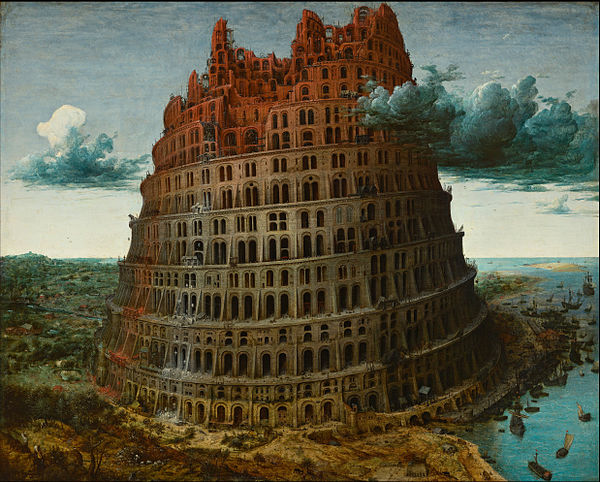
In this one from 1563, the tower appears more complete, not to mention redder. Notice that the tower is an ascending spiral, not a straight tower. The painting is intended to be a reminder of human pride goes before the fall.
—–
The next painting, with several images below, is Nicolas Poussin’s (1594-1665) The Destruction of the Jerusalem Temple (by Titus).
There is something odd about this painting. For one thing Titus, on his horse seems to be looking above the canvas, but at what? Perhaps the lightning bolt of God who is the real judge of the temple? In any case this painting is a good example of the French baroque style which influenced many later artists such as Cezanne. We need to remember that up to modernity, the major patron of the arts in Europe was the church, hence so many paintings of Biblical subjects before the modern period. It is not accident that when the church started to do less and less sponsoring of art, the subjects became more and more secular, an excellent example of what happens when the church ceases to sponsor Christian culture in the public sphere. Another good example would be, if you don’t want our public schools to go to the dogs, stop withdrawing your Christian children and your own PTA influence from those schools.
Perhaps my favorite painting is that of St. John listening to the angel and writing the book of Revelation.
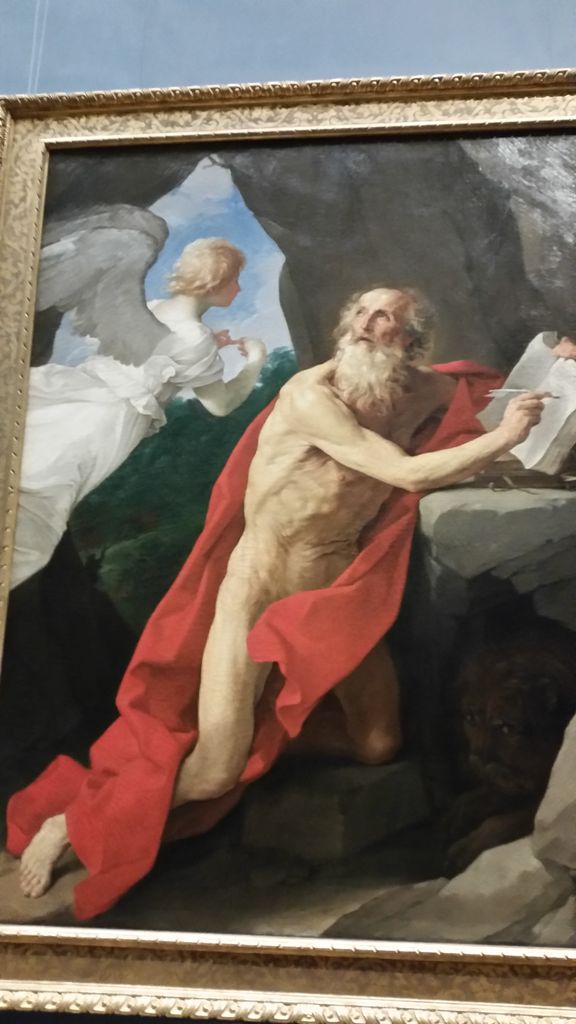
I also love the painting of the risen Jesus breaking the bread at Emmaus with Cleopas and another disciple
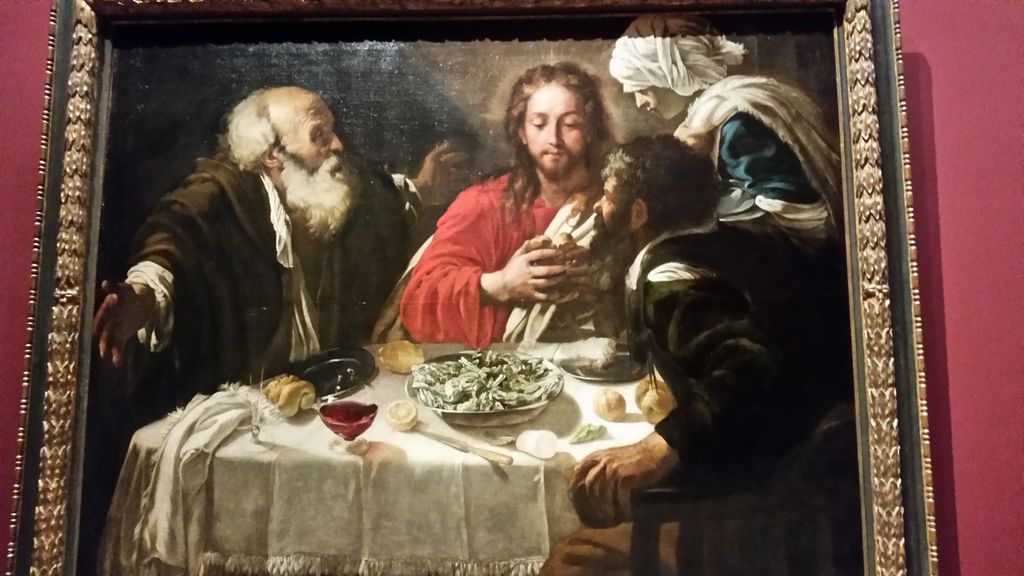 One wonders if originally the other disciple was in fact Cleopas’ wife, perhaps mentioned as being at the cross in Jn 19— Mary of Cleopas/Clopas.
One wonders if originally the other disciple was in fact Cleopas’ wife, perhaps mentioned as being at the cross in Jn 19— Mary of Cleopas/Clopas.
Here is a famous representation of Jesus with the Samaritan woman at the well by Carracci (1560-1609).
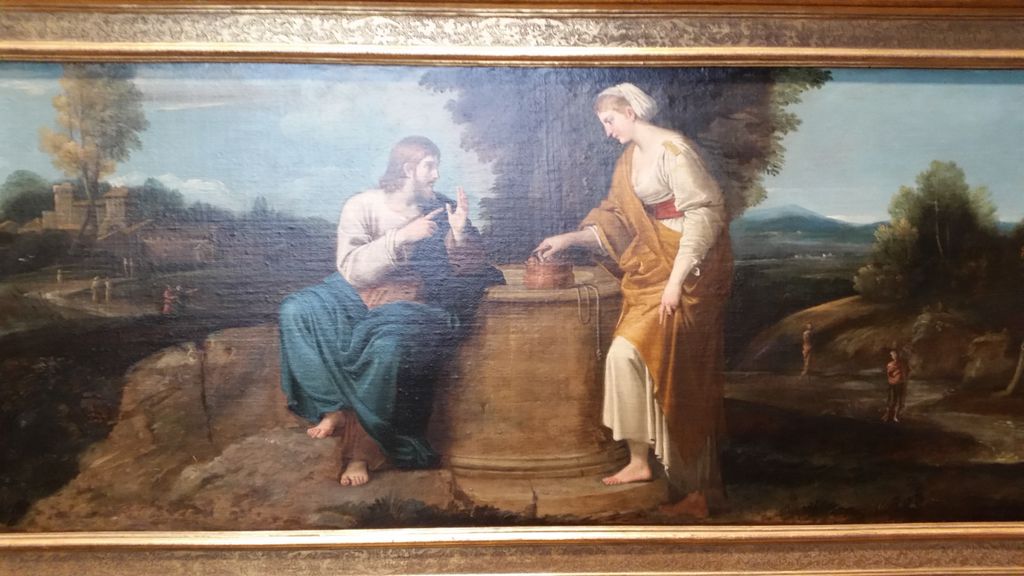
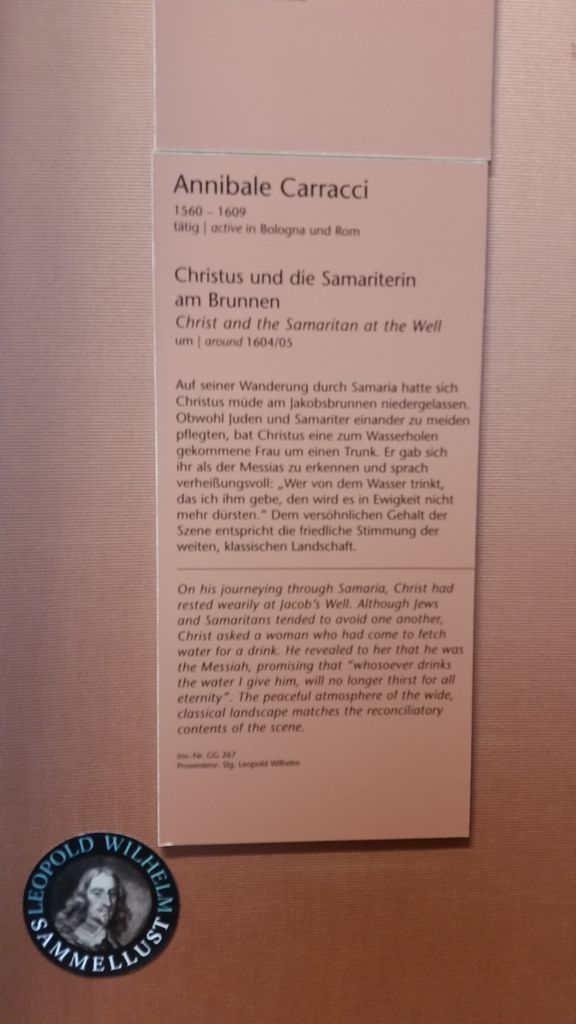
da Cortona’ poignant depiction of the return of a pregnant Hagar to Abraham is moving as well.
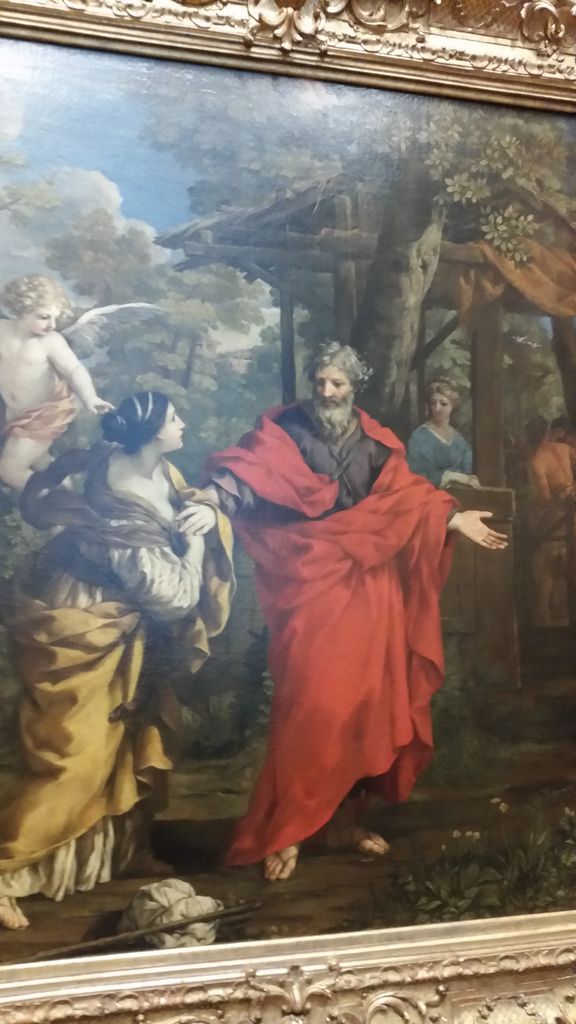
Saving the best for last is this amazing huge altar piece
a triptych which so many of those altarpieces are….
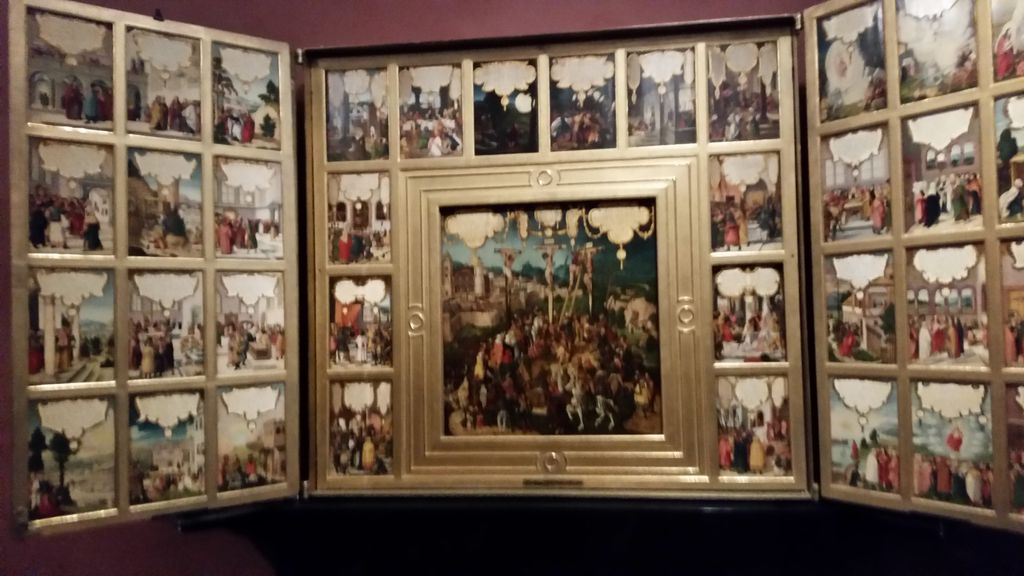
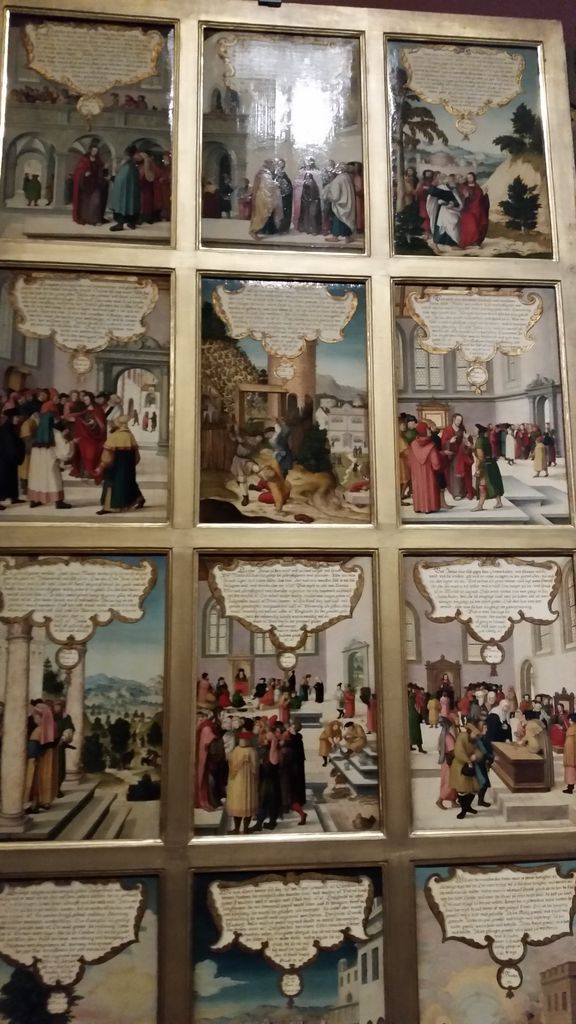
One of the things that is unique about this one is the blurbs on the painting, in Deutsch of course.
There is more Christian art, in the form of reliquaries and sculptures and the like but we will save that for the next post.


